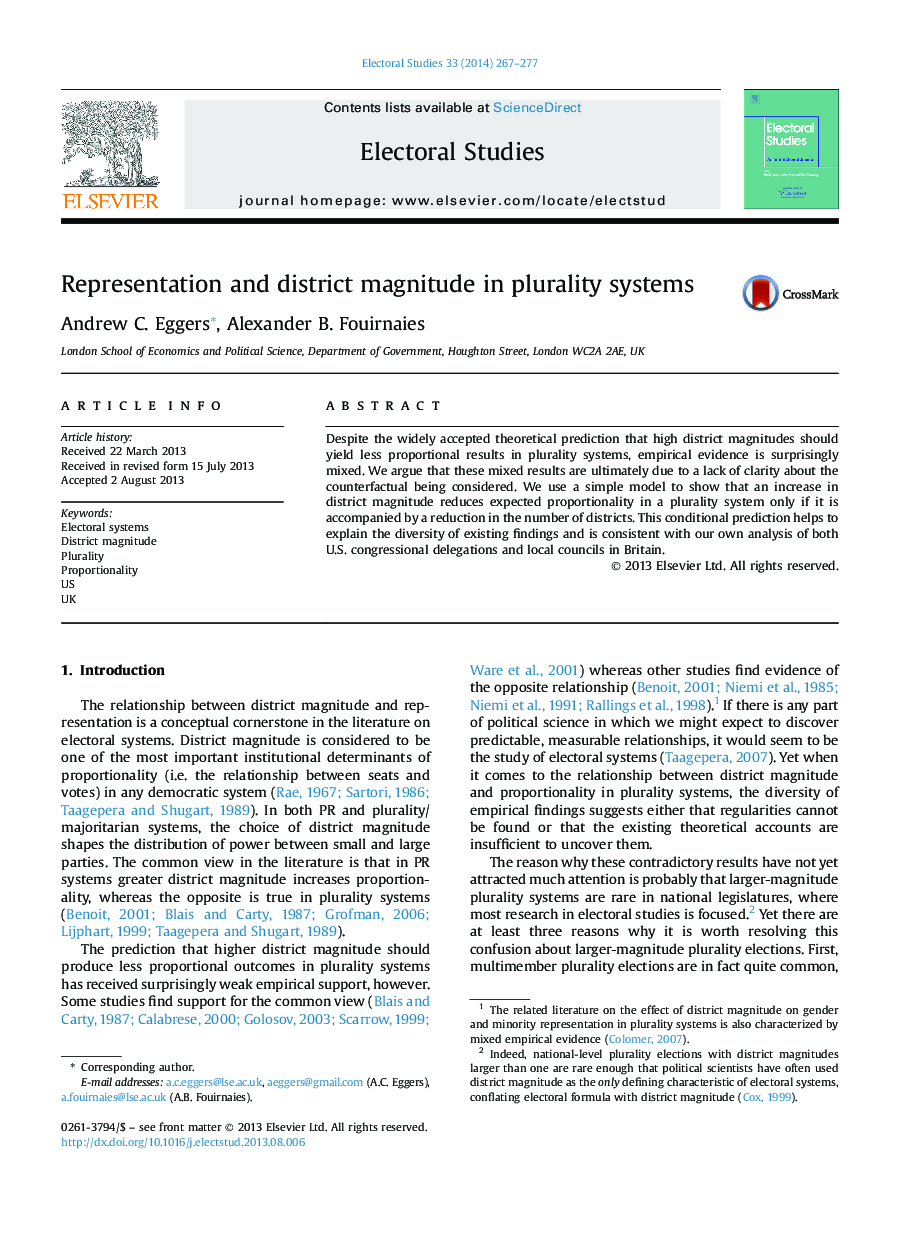| Article ID | Journal | Published Year | Pages | File Type |
|---|---|---|---|---|
| 1051909 | Electoral Studies | 2014 | 11 Pages |
•We study the relationship between proportionality and district magnitude in plurality electoral systems.•The standard prediction about this relationship is not consistently supported by empirical studies.•We show via a simple model that the relationship depends on the counterfactual being considered.•Existing evidence is consistent with a revised prediction that takes into account the level of analysis.•We highlight our points through analysis of elections to the US Congress and British local councils.
Despite the widely accepted theoretical prediction that high district magnitudes should yield less proportional results in plurality systems, empirical evidence is surprisingly mixed. We argue that these mixed results are ultimately due to a lack of clarity about the counterfactual being considered. We use a simple model to show that an increase in district magnitude reduces expected proportionality in a plurality system only if it is accompanied by a reduction in the number of districts. This conditional prediction helps to explain the diversity of existing findings and is consistent with our own analysis of both U.S. congressional delegations and local councils in Britain.
